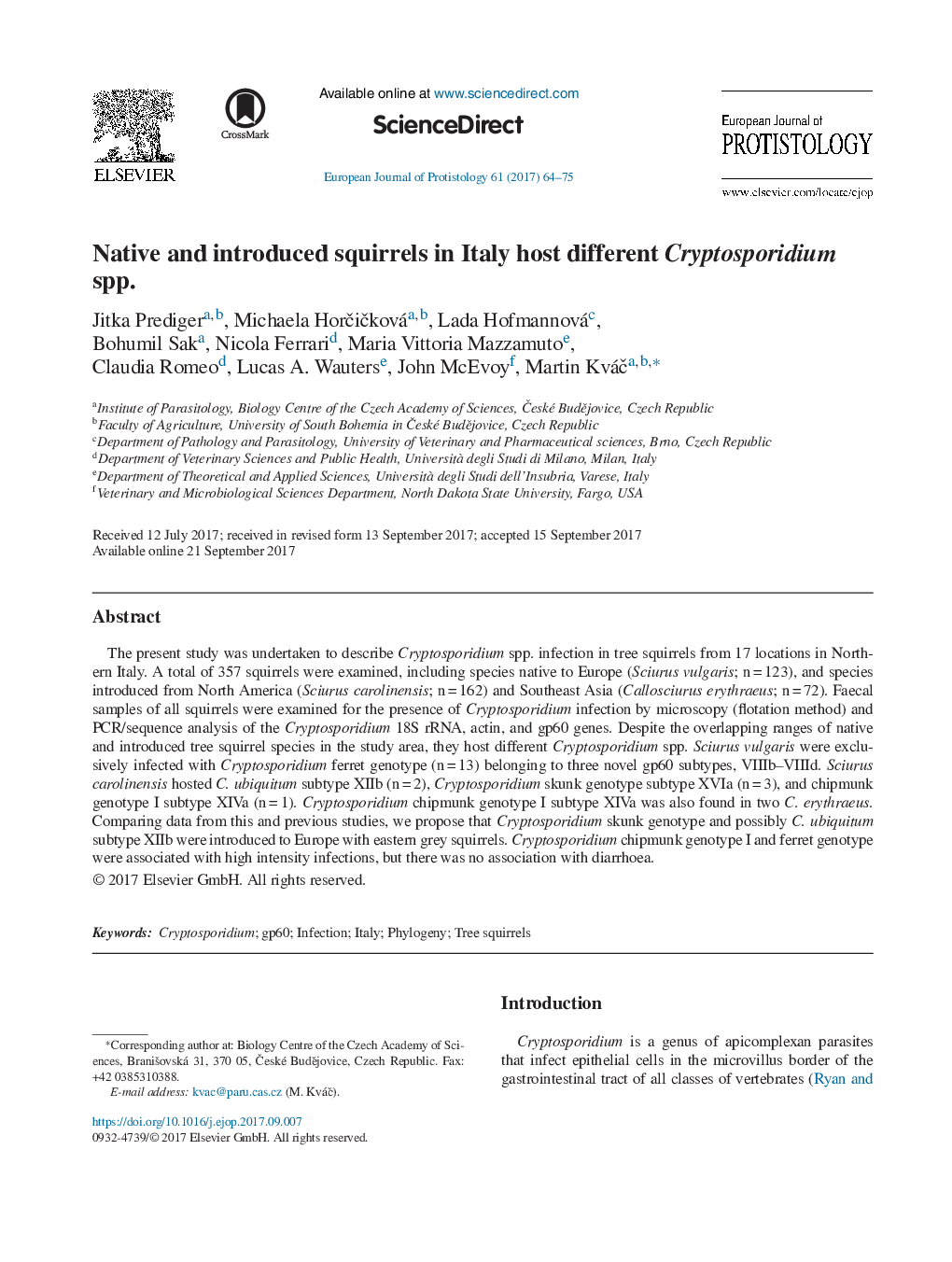| Article ID | Journal | Published Year | Pages | File Type |
|---|---|---|---|---|
| 5517505 | European Journal of Protistology | 2017 | 12 Pages |
â¢C. ubiquitum and skunk genotype may be introduced to Europe with grey squirrels.â¢Eurasian red squirrels were primarily infected by Cryptosporidium ferret genotype.â¢GP60 family XVIa belongs to the Cryptosporidium skunk genotype.â¢Infections were not linked to clinical cryptosporidiosis in squirrels.
The present study was undertaken to describe Cryptosporidium spp. infection in tree squirrels from 17 locations in Northern Italy. A total of 357 squirrels were examined, including species native to Europe (Sciurus vulgaris; n = 123), and species introduced from North America (Sciurus carolinensis; n = 162) and Southeast Asia (Callosciurus erythraeus; n = 72). Faecal samples of all squirrels were examined for the presence of Cryptosporidium infection by microscopy (flotation method) and PCR/sequence analysis of the Cryptosporidium 18S rRNA, actin, and gp60 genes. Despite the overlapping ranges of native and introduced tree squirrel species in the study area, they host different Cryptosporidium spp. Sciurus vulgaris were exclusively infected with Cryptosporidium ferret genotype (n = 13) belonging to three novel gp60 subtypes, VIIIb-VIIId. Sciurus carolinensis hosted C. ubiquitum subtype XIIb (n = 2), Cryptosporidium skunk genotype subtype XVIa (n = 3), and chipmunk genotype I subtype XIVa (n = 1). Cryptosporidium chipmunk genotype I subtype XIVa was also found in two C. erythraeus. Comparing data from this and previous studies, we propose that Cryptosporidium skunk genotype and possibly C. ubiquitum subtype XIIb were introduced to Europe with eastern grey squirrels. Cryptosporidium chipmunk genotype I and ferret genotype were associated with high intensity infections, but there was no association with diarrhoea.
